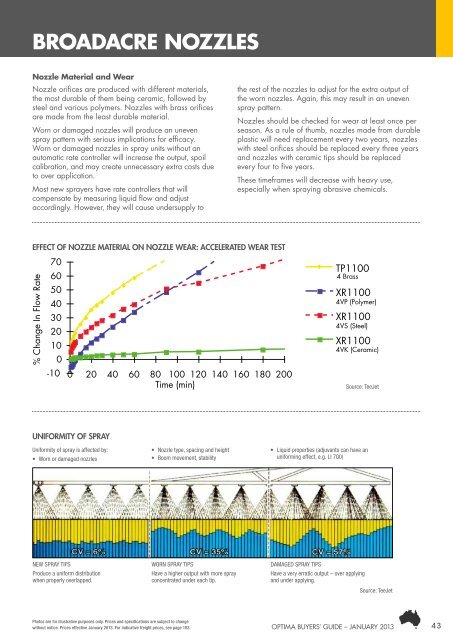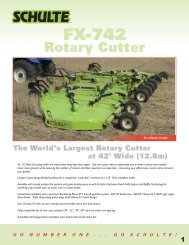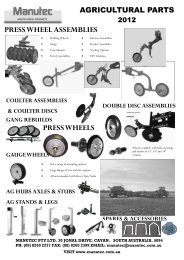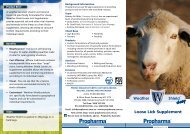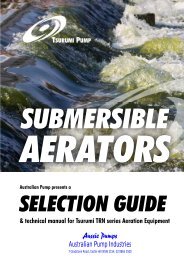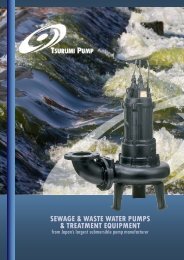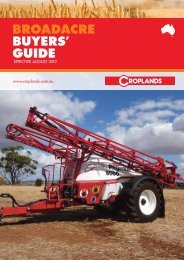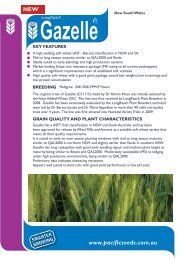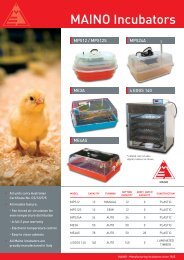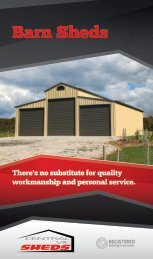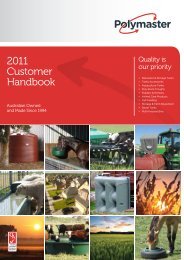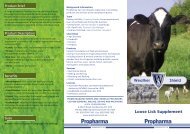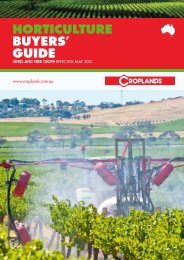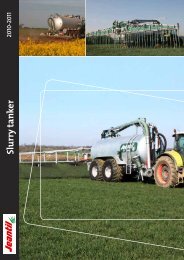Linkage Sprayers Product Information (13176 Kb) - Fatcow
Linkage Sprayers Product Information (13176 Kb) - Fatcow
Linkage Sprayers Product Information (13176 Kb) - Fatcow
Create successful ePaper yourself
Turn your PDF publications into a flip-book with our unique Google optimized e-Paper software.
Broadacre nozzles<br />
Nozzle Material and Wear<br />
Nozzle orifices are produced with different materials,<br />
the most durable of them being ceramic, followed by<br />
steel and various polymers. Nozzles with brass orifices<br />
are made from the least durable material.<br />
Worn or damaged nozzles will produce an uneven<br />
spray pattern with serious implications for efficacy.<br />
Worn or damaged nozzles in spray units without an<br />
automatic rate controller will increase the output, spoil<br />
calibration, and may create unnecessary extra costs due<br />
to over application.<br />
Most new sprayers have rate controllers that will<br />
compensate by measuring liquid flow and adjust<br />
accordingly. However, they will cause undersupply to<br />
the rest of the nozzles to adjust for the extra output of<br />
the worn nozzles. Again, this may result in an uneven<br />
spray pattern.<br />
Nozzles should be checked for wear at least once per<br />
season. As a rule of thumb, nozzles made from durable<br />
plastic will need replacement every two years, nozzles<br />
with steel orifices should be replaced every three years<br />
and nozzles with ceramic tips should be replaced<br />
every four to five years.<br />
These timeframes will decrease with heavy use,<br />
especially when spraying abrasive chemicals.<br />
EFFECT OF NOZZLE MATERIAL ON NOZZLE WEAR: ACCELERATED WEAR TEST<br />
% Change In Flow Rate<br />
70<br />
60<br />
50<br />
40<br />
30<br />
20<br />
10<br />
0<br />
-10<br />
0 20 40 60 80 100 120 140 160 180 200<br />
Time (min)<br />
TP1100<br />
4 Brass<br />
XR1100<br />
4VP (Polymer)<br />
XR1100<br />
4VS (Steel)<br />
XR1100<br />
4VK (Ceramic)<br />
Source: TeeJet<br />
UNIFORMITY OF SPRAY<br />
Uniformity of spray is affected by:<br />
• Worn or damaged nozzles<br />
• Nozzle type, spacing and height<br />
• Boom movement, stability<br />
• Liquid properties (adjuvants can have an<br />
uniforming effect, e.g. LI 700)<br />
NEW SPRAY TIPS<br />
Produce a uniform distribution<br />
when properly overlapped.<br />
WORN SPRAY TIPS<br />
Have a higher output with more spray<br />
concentrated under each tip.<br />
DAMAGED SPRAY TIPS<br />
Have a very erratic output – over applying<br />
and under applying.<br />
Source: TeeJet<br />
Photos are for illustrative purposes only. Prices and specifications are subject to change<br />
without notice. Prices effective January 2013. For indicative freight prices, see page 103. 43<br />
Optima BUYERS’ GUIDE – JANUARY 2013


